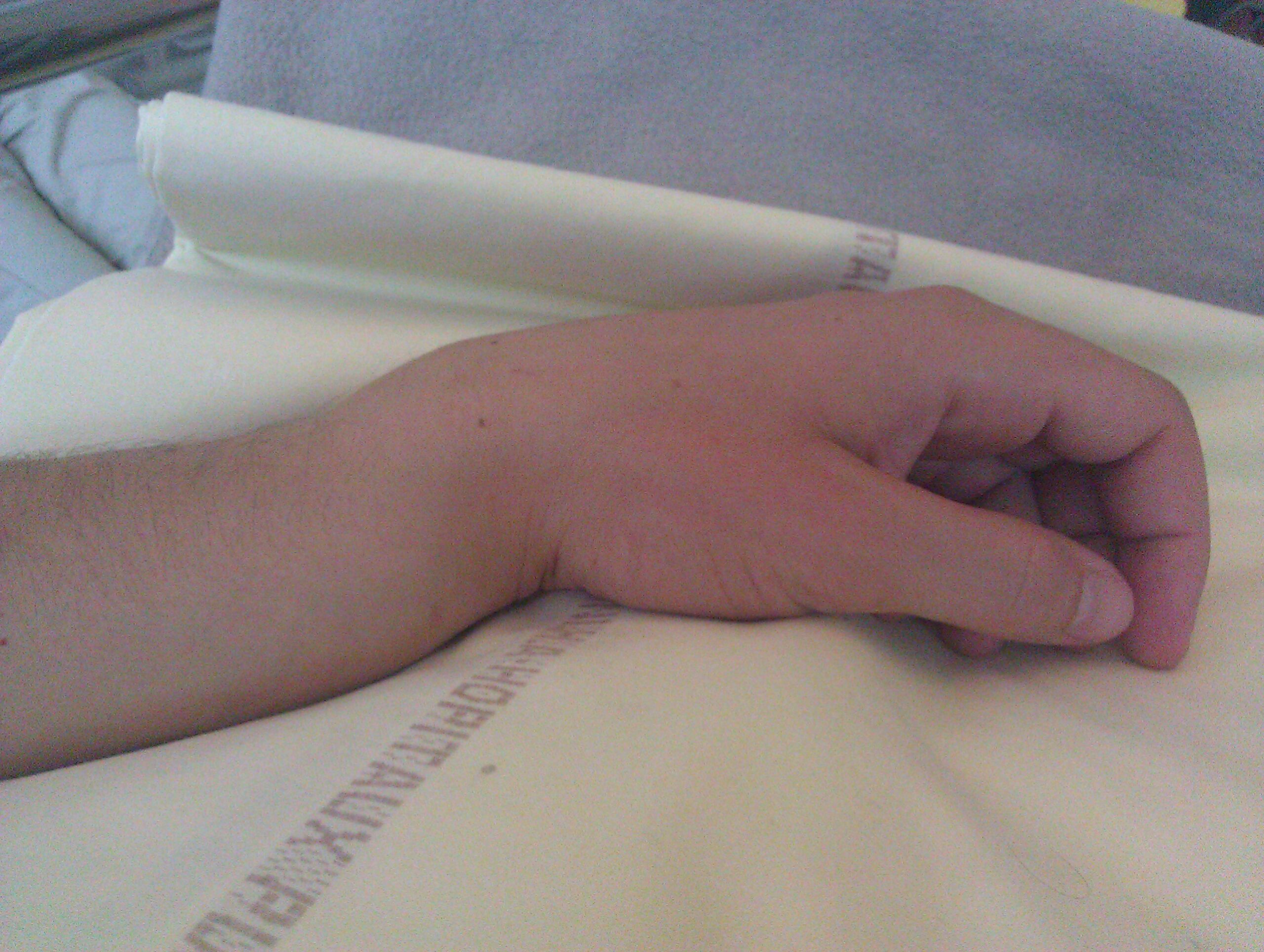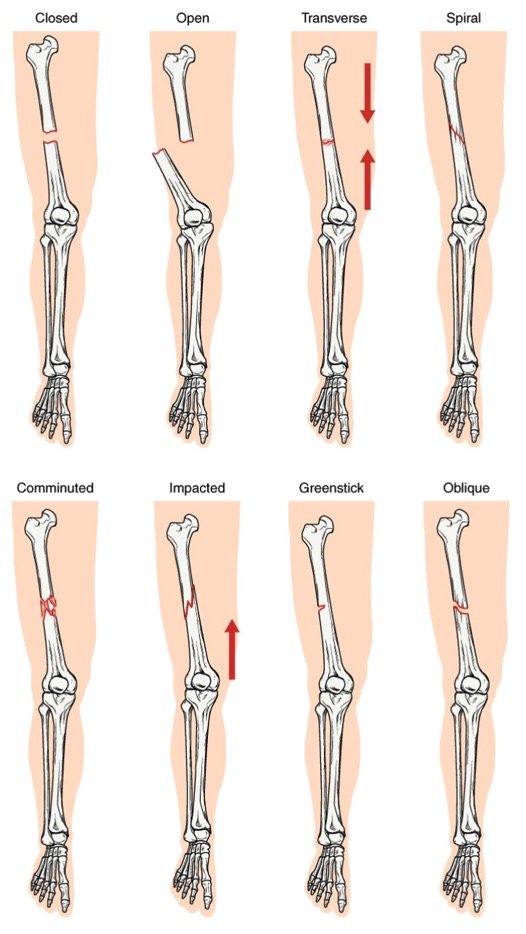Playlist
Show Playlist
Hide Playlist
Classic Fractures
-
Slides Classic fractures Special Surgery.pdf
-
Download Lecture Overview
00:01 Welcome back. 00:02 Thanks for joining me on this discussion of classic fractures in the section of orthopedic surgery. 00:08 It’s important to know that we won’t be covering every single fracture known to orthopedic surgery, just the high-yield information. 00:17 Let's begin with Colles' fracture. 00:20 Colles' fracture is a wrist fracture. 00:23 And the mechanism of action is usually due to a fall on an outstretched hand. 00:28 You can imagine a scenario, an elderly patient who is a little unsteady on their feet, walking about with a cane. 00:35 As they fall, it's natural reflex for us to have our hands stretched out. 00:42 And this is on physical examination, the finding. 00:46 What you’ll notice is that it’s a fracture of the distal radius and ulnar just above the wrist. 00:51 Clearly, the hand here and the upper wrist looks like there is obvious deformity and there's some swelling in the region of the distal writst. 01:03 Let's get some imaging. 01:04 Here are plain x-rays. 01:06 And you’ll notice on the circled areas are where we see a distal radius. 01:11 Once again, you can imagine why this would happen in an outstretched hand. 01:15 And it's also important, as you can see, based on these x-rays, the radius and the ular are not the biggest, strongest bones. 01:25 Let me pose a question to you. 01:28 Now that we’ve reviewed a Colles’ fracture, what is a reverse Colles’ fracture? I’ll give you a second to think about this. 01:36 That’s right. 01:37 Instead of falling with an extended hand, it is associated with a fall on a flexed hand. 01:42 So instead of an extended hand, we now have the fall on the flexed hand, but still landing on the wrist area. 01:48 This is still a high impact – direct impact to the wrist. 01:52 Similarly, you can get the ulnar or the radius fracture. 01:58 How do we fix it? Well, it may require surgery or they can simply be splinted and immobilized for four weeks. 02:06 Remember, before orthopedic surgery became a specialty of medicine and in old times, people used to heal all the time. 02:13 Our bones actually have amazing ability to heal. 02:19 Let's move on. 02:20 This is called the snuff box fracture. 02:23 A snuff box fracture is important. 02:25 It also is due to a fall on an outstretched hand, causing extreme dorsiflexion and forced to load on the scaphoid bone. 02:37 On physical examination, notice the triangle demonstrating the snuff box. 02:41 This is called the anatomic snuff box. 02:44 Tenderness over this anatomic region is suggestive that there may be a snuff box fracture. 02:50 There may also be associated bruising or swelling. 02:56 On imaging, if you can see it on the x-ray, the green arrow points to the snuff box or scaphoid fracture. 03:04 However, sometimes it’s difficult to detect these fractures on plain x-rays alone. 03:11 And that's why orthopedic surgeons often get an MRI. 03:17 These MRIs may help detect an injury earlier. 03:21 And for snuff box injuries, detection is better for outcomes. 03:28 How do we fix it? Well, surgery is usually not recommended. 03:32 It's generally a thumb splint and don't forget to reimage several weeks later. 03:37 In fact, for all fractures, usually, we recommend follow-up x-rays to make sure things are healing and healing in an aligned fashion.
About the Lecture
The lecture Classic Fractures by Kevin Pei, MD is from the course Special Surgery.
Included Quiz Questions
A fall or a direct impact on a flexed wrist will MOST likely result in which of the following types of fractures?
- Reverse Colles’ fracture
- Colles’ fracture
- Barton’s fracture
- Monteggia fracture
- Greenstick fracture
Which type of fracture results in a dorsal and radial displacement of the radius?
- Colles’ fracture
- Monteggia fracture
- Barton’s fracture
- Scaphoid fracture
- Reverse Colles’ fracture
Customer reviews
2,5 of 5 stars
| 5 Stars |
|
0 |
| 4 Stars |
|
0 |
| 3 Stars |
|
1 |
| 2 Stars |
|
1 |
| 1 Star |
|
0 |
I think overall orthopedic section is lacking. There are a lot of subjects not covered! I like the lecturio concept but i think they need to make the courses more complete and a little more in debth so that it can be really helpfull for medical school.
The video repeats itself midway through. If that was the entire content then this is very superficial.





